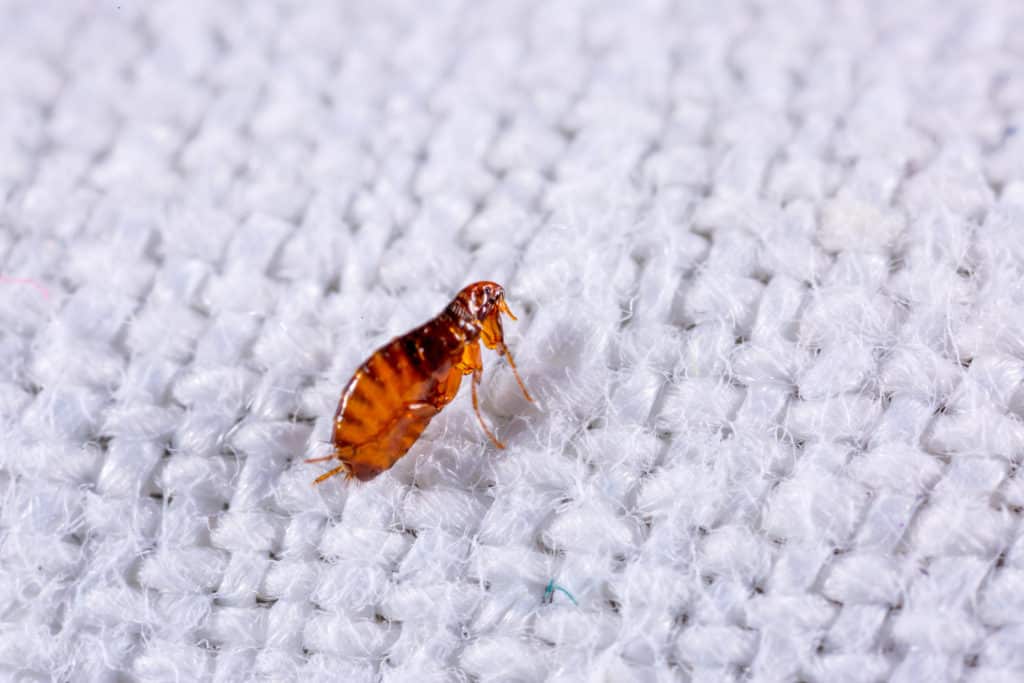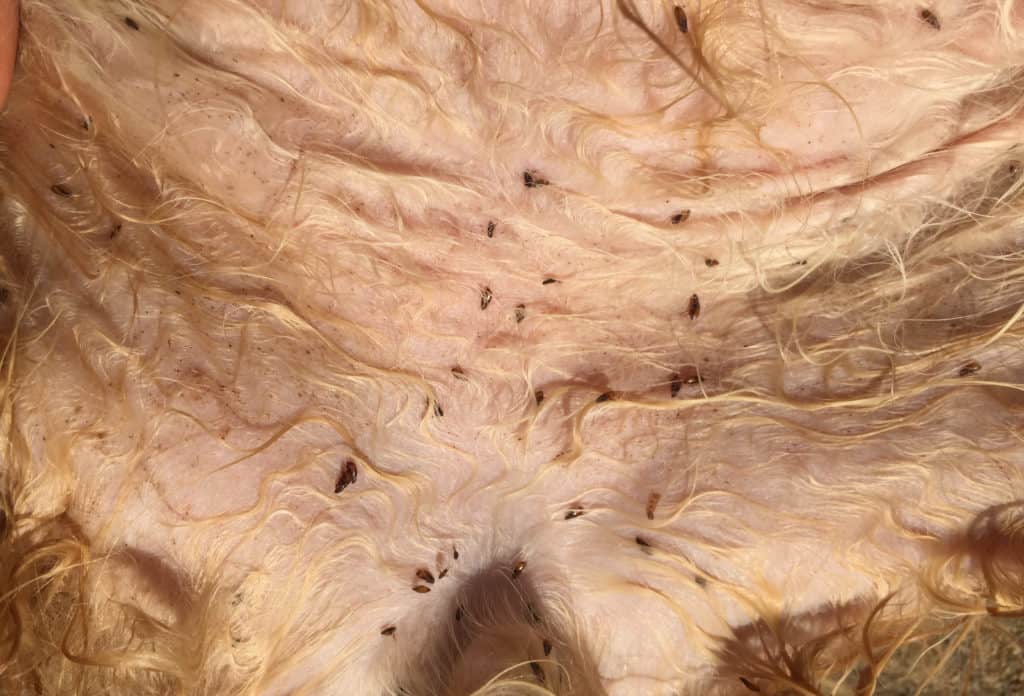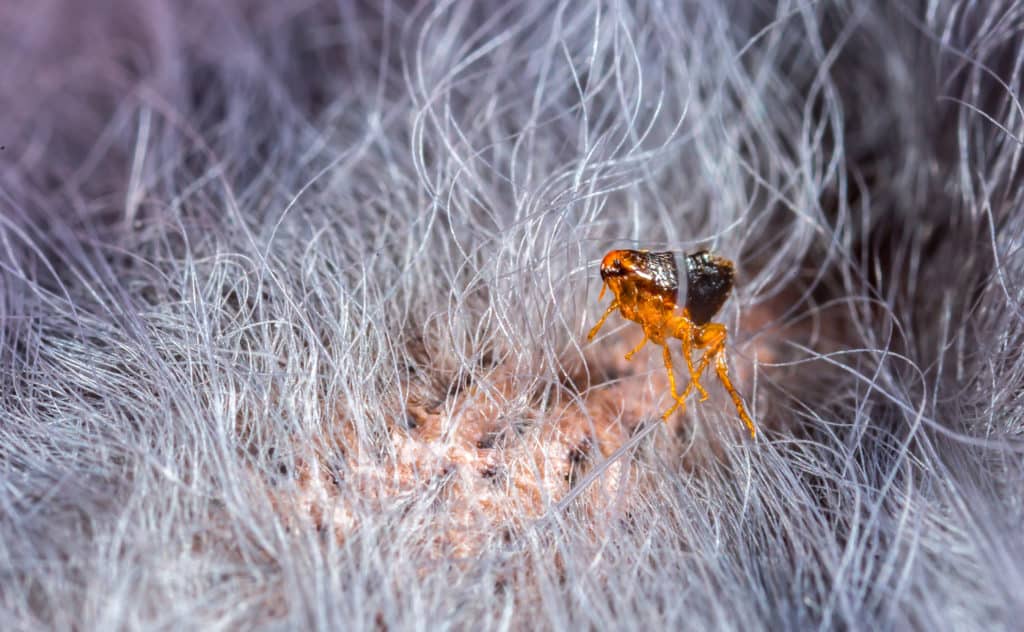Problematic Parasites – Fleas and Their Dangers
Problematic Parasites – Fleas and Their Dangers
Tiny Terrors
Flies are external parasites in the order Siphonaptera, which is made up of 2,500 subspecies, roughly 300 of which are found in the US. Of these 300, the most prominent species to plague us is the Ctenocephalides felis… also known as the “cat flea,” though, this is a misnomer as the Ctenocephalides felis most commonly infect dogs. Other species of flea that are fairly common in the US include: Ctenocephalides canis (the dog flea), Pulec irritans (the human flea), Xenopsylla cheopis (the oriental rat flea), and Nosopsyllus fasciatus (the northern rat flea).
These insects are exceedingly small, measuring about an 8th of an inch in length and sporting a reddish-brown shell. Roughly 94% of fleas on Earth are known to infect mammals, while 6% feed on avian creatures.

Allergies and Anemia
Fleas tend to feast on the blood of our beloved furry friends such as cats and dogs. A common condition for both is called flea allergy dermatitis (FAD) which results from the bites of these nasty insects.
When fleas bite, their saliva is injected into the dermis of their victims. This saliva can cause an immune response in dogs and cats, resulting in intense itchiness and skin irritation. The more serious the FAD, the more hair loss your furry friend will experience and, in severe cases, aggressive rashes and skin infections can even occur.
In other severe cases, when various fleas are attacking one host, your dog or cat could be at risk of developing a very serious medical condition: anemia. As defined by Mayo Clinic, anemia is “a condition in which [the affected individual] lack[s] enough healthy red blood cells to carry adequate oxygen to [the] body’s tissues.” It is caused by fleas draining an excessive amount of blood from your furry friend and is a condition that requires immediate medical intervention by a veterinarian. If your pet is developing anemia, you may notice increased lethargy, labored and/or rapid breathing, and weakness. If left untreated, this flea-induced condition can unfortunately even lead to death.

Passing Parasites
Bad allergies and anemia, while both serious conditions, sometimes pale in comparison to another horrifying problem fleas can cause. This problem involves an inception of sorts, as the phenomenon results from a parasite inside of a parasite. Some fleas are internally infested with the eggs of tapeworms, so when an unsuspecting dog or cat reacts to the itchy bite of these insects and nips or licks the area to try and sooth the itch, they may accidentally ingest the infected flea, leading to a far bigger problem.
Once in the digestive system of Fido or Mittens, the eggs of the tapeworm will hatch and begin using their sharp, beak-shaped mouth appendages to latch on to the lining of your furry friend. From here, they begin feasting on their host, causing weight loss, changes in appetite, discomfort, vomiting, irregular bowel excretions, and diarrhea. Prior to experiencing some of those more severe symptoms, cats can dogs both commonly experience a rather repulsive token of their internal parasite… squeamish beware!
During times when the animal is relaxed, portions of the tapeworms may slough off and exit their host via the anus, wriggling out often while the unsuspecting dog or cat is asleep. If you are lucky enough not to bear witness to this horrifying spectacle, you may instead see what appears to be little sesame seeds or tiny grains of rice stuck to the fur around your pet’s rear end. These are the dried-up worm portions that have exited the anus and are full of tapeworm eggs.
As horrifying as this all is, tapeworms are luckily very easily treated by a veterinarian. But, to avoid a case of immediate re-infection, you will also need to be sure to rid your animal and home of any fleas as well.

Harming Humans
Fleas don’t just affect pets, in fact, are notorious spreaders of disease and destruction throughout history. The rats that are typically attributed for passing the bubonic plague/black death were actually carrying infected fleas that transmitted the disease, killing millions of people. Aside from being vectors for plague, the common flea can harbor a plethora of other diseases that can cause extensive harm or, in serious cases, even death. These include: flea-bore typhus, cat scratch disease, and even tapeworms (in the case that the condition is passed from your pet to you, or somehow you accidentally ingest an infected flea).

Flea Control
Fleas are far from being simple annoyances and are considered a very serious pest problem by professionals. Our Flea Treatments can assist in ridding your home of these nasty insects and we are dedicated to continue working with you until you’re free of these problematic parasites. We do highly recommend using our treatments in unison with veterinary treatments for your infected pets in order for results to be effective (otherwise, Fido or Mittens might continue to bring them back into your home).
Stay safe! Stay flea-free!
Citations
Anemia (no date) Mayo Clinic. Mayo Foundation for Medical Education and Research. Available at: https://www.mayoclinic.org/diseases-conditions/anemia/symptoms-causes/syc-20351360 (Accessed: September 2020).
Fleaborne Diseases of the United States (2020) Centers for Disease Control and Prevention. U.S. Department of Health and Human Services. Available at: https://www.cdc.gov/fleas/diseases.html (Accessed: September 2020).
The Hidden Dangers of Flea Bites: What to Look For (no date) The Associated Press. Seresto. Available at: https://apnews.com/sponsored/?prx_t=z40EAq48yAniAPA&prx_ro=s&ntv_fpc=671dc30c-79c6-4e77-b41f-040c722e9642&ntv_fr (Accessed: September 2020).
Hill, C. and MacDonald, J. (2008) Fleas, Purdue University . Purdue’s College of Agriculture: Entomology Department. Available at: https://extension.entm.purdue.edu/publichealth/insects/flea.html (Accessed: September 2020).
Prevention and Control: Fleas (N/A) Illinois Department of Public Health. The Division of Environmental Health. Available at: http://www.idph.state.il.us/envhealth/pcfleas.htm (Accessed: May 2020).
Tapeworms in Cats 101 (2020) Chewy Pet Central. Available at: https://petcentral.chewy.com/tapeworms-in-cats/ (Accessed: September 2020).

